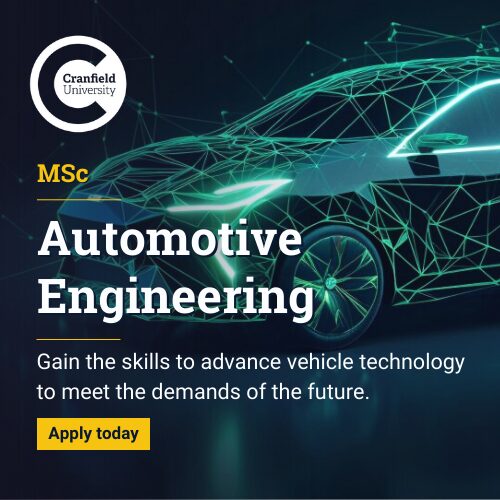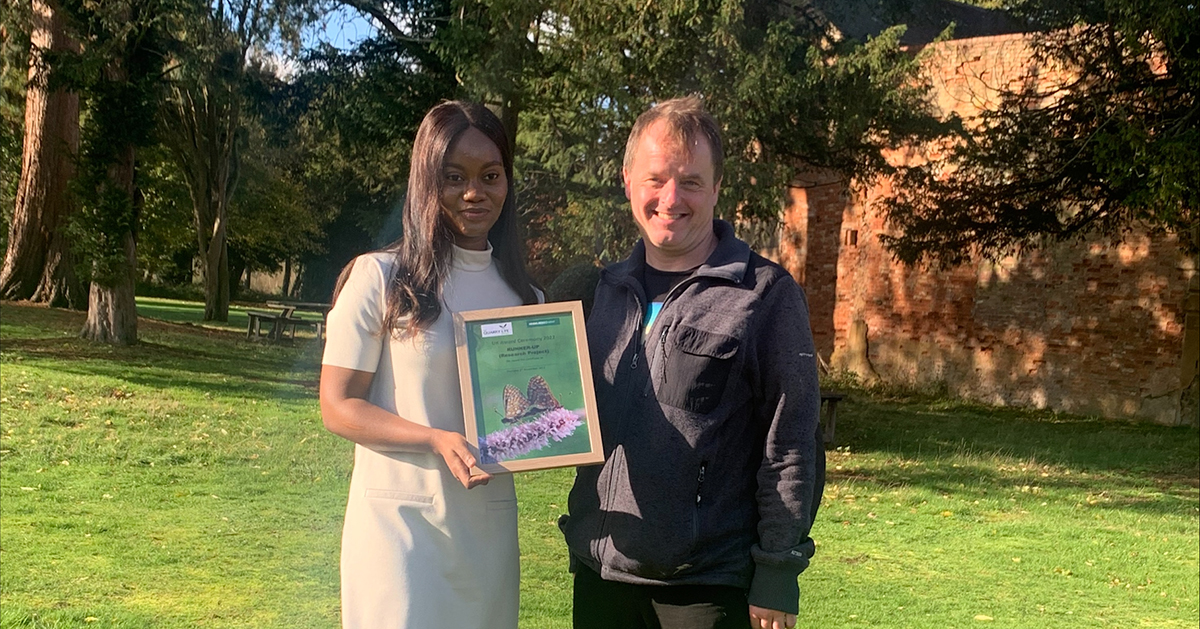Shifting Gears: How virtual prototyping is driving the future of automotive and motorsport
10/03/2025

The roar of the engine, the thrill of the track, the relentless pursuit of perfection – these are the hallmarks of racing cars. But even in the world of high-octane performance, the automotive and motorsport industries are in a constant state of evolution. Pushing the boundaries of performance, safety, and sustainability demands constant innovation, and one area is experiencing a revolution: virtual prototyping. This digital transformation is reshaping how vehicles are designed, developed, and optimised, creating exciting opportunities for engineers with the right expertise.
So, what are the critical skills gaps driving this change?
Cranfield’s industrial partners understand the critical skills gaps driving this change and have highlight several key areas:
• Efficient automatic structural optimisation: The ability to rapidly and automatically optimise vehicle structures is crucial for achieving light-weighting targets without compromising safety or performance. This requires advanced knowledge of optimisation algorithms and simulation techniques.
• Composite materials expertise: The increasing use of composite materials in vehicle construction demands specialised skills in simulating and automatically optimising the complex layups and material properties of these advanced materials.
• Automation of analysis and postprocessing: The sheer volume of data generated by simulations requires automated tools for analysis and postprocessing, enabling engineers to quickly extract meaningful insights and make informed decisions.
• Modelling complex non-linear structures: Modern vehicles often incorporate highly non-linear structures, requiring advanced modelling techniques to accurately predict their behaviour under various loading conditions.
Graduates with expertise in these areas are highly sought after. They can contribute immediately by pushing the boundaries of virtual prototyping, adding value to the design process, and gaining invaluable skills in the process.
This aligns perfectly with the evolving needs of advanced vehicle design and development. Shorter lead times, rapidly changing targets, and increasingly complex projects are pushing the industry towards virtual development.
Our industrial partners believe that everything is pushing towards the direction of working in the virtual development world, reducing at the real minimum the experimental time and costs to be spent. This shift emphasises the importance of advanced finite element modelling, crashworthiness, durability, and NVH – all strategic areas for the future of vehicle design.
What career paths await graduates with these skills?
The possibilities are vast. A strong technical foundation opens doors to a wide range of roles, from design and simulation to testing and track activities, spanning both operative and management positions. The key is a good and specific technical preparation, in line with the today needs of our industry but also open enough to be ready for the fast-changing environment where we are living and working in.
Therefore, we have collaborated with industrial partners, including Ferrari, to design a course that bridges this gap. With our established reputation in automotive and motorsport engineering, we are uniquely positioned to deliver this cutting-edge education. Our deep involvement in the industry provides not only technical expertise but also a holistic vision of vehicle design, encompassing industrial processes, available technologies, and business considerations.
According to our partners at Ferrari:
“The very important and ‘wide-angle’ involvement in automotive and motorsport industry are giving Cranfield a deep experience on the technical subjects, but also quite a ‘holistic’ vision of what a car or a race car are when we look at them not only as very complex systems that should deliver performance along a very wide set of objectives, but also when immersed in the more general context of industrial processes, available technologies, business cases.”
The impact of graduates from such programmes on the industry’s ability to innovate in areas like lightweighting, safety, and sustainability is immense. These complex challenges demand sophisticated virtual modelling capabilities.
Virtual prototyping empowers engineers to explore new concepts, optimise designs, and accelerate the innovation process, leading to increased efficiency, reduced time to market, and enhanced performance.
The future of automotive and motorsport is being built virtually, and graduates with these specialised skills are ready to drive that change.
Categories & Tags:
Leave a comment on this post:
You might also like…
How do I cite… quotations from video content in the APA7 style
When you quote from another source in your writing, you would traditionally include a page number in your in-text citation. But what do you do when there are no pages? How would you cite a ...
Using what you read in what you write – Summarising, paraphrasing and quoting other authors
University life involves a serious amount of reading and writing. We study the work of other people to inform ourselves about a topic. When we then re-use that knowledge to create our own work, we ...
Referencing in APA7: Using shortened URLs
As you may be aware, when you are referencing a website or any internet-based source you need to include the source URL. For most conventional reference lists, it is fine to include the URL or ...
Quarry Life and Cranfield Life
It might be thrilling to push yourself past your comfort zone, but it can also leave you feeling anxious and self-conscious. What if this is unsuccessful? What if I'm not as talented as I ...
School of Management Library closes on Thursday 31 July
The School of Management Library in Building 111 will permanently close on Thursday 31 July at 5pm. Some equipment and furniture will move to Kings Norton Library next week (w/c 21st July), staff will move on ...
Getting started on your business and management thesis or research project
Doing a research project, whether it's a thesis, business plan, internship or consultancy project can be a daunting task, and you might have some questions around how to get started. This post is intended to ...








